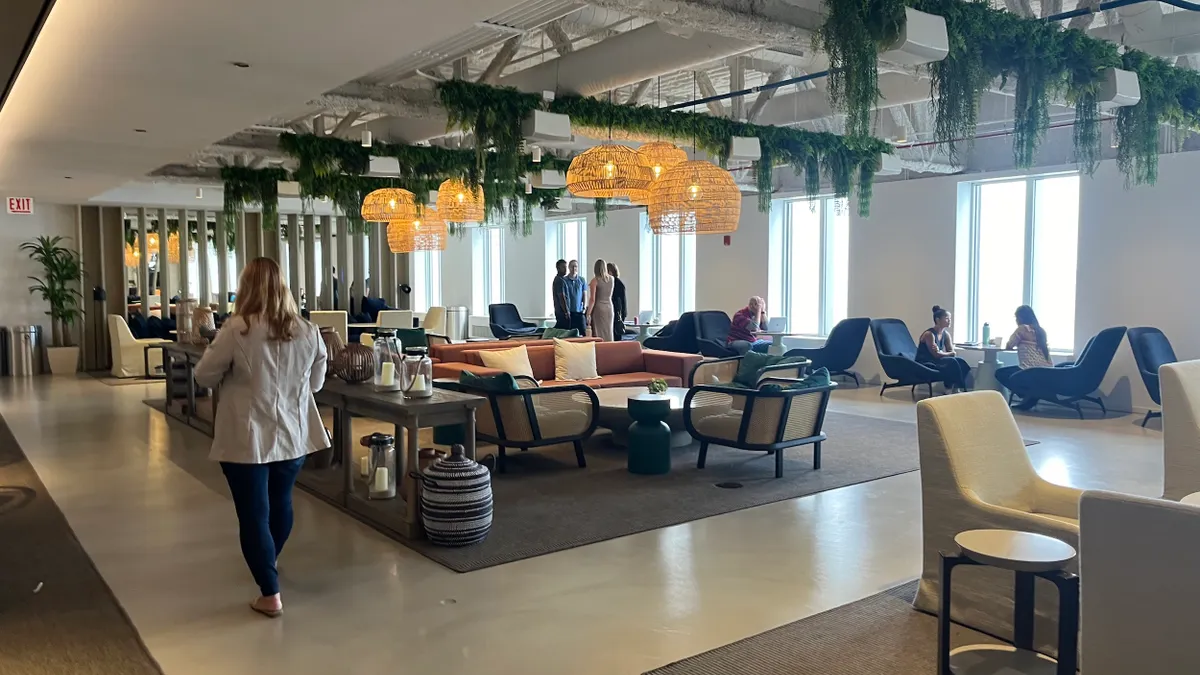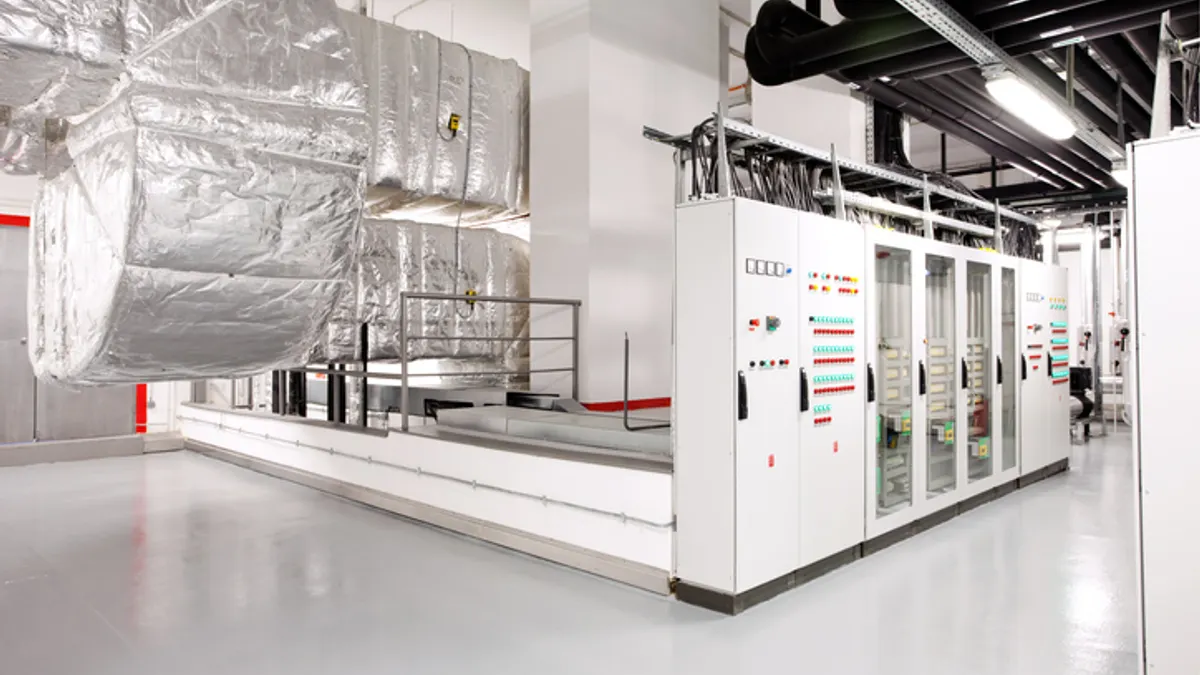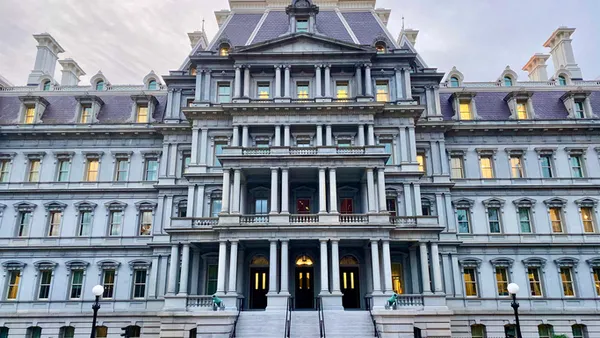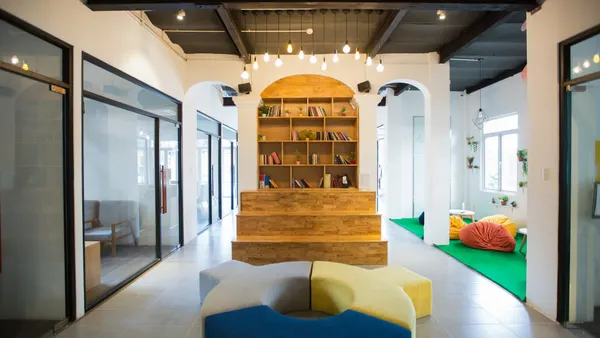After years of significant expansion, total coworking location count has dipped to a more measured approach, according to research by Coworking Cafe.
The slowdown — the first since the pandemic — is the result of operators prioritizing amenity-rich hubs, the company said in a report released Aug. 6.
National flex office presence in the U.S. rose 0.3% in the first quarter, after a 3% jump in Q1, when nearly 4 million feet was added across the country. The deceleration means operators are shifting focus from expansion to portfolio rationalization, targeting profitable locations and trimming underperforming space, Coworking Cafe says.
“We weren’t shocked to see a cooling down period given the run up on expansions over the last year and a half and macro-level market questions,” Peter Kolaczynski, director of Yardi Research, which worked with Coworking Cafe on the report, said in a statement.
Likely reasons for the slowdown: occupiers adjusting to hybrid work demands and economic pressures, the report says.
Alternatives to traditional leases
Looking at the market from the occupier perspective, there’s no slowdown in organizations wanting to leverage flexible office space as a way to reduce capital expenditure, solve for uncertain demand and offer collaboration space on demand, says a CBRE report.
Right now, most organizations say less than a quarter of their portfolios are dedicated to flexible space, but occupiers are eager to explore space solutions that vary from traditional leases and intend to grow adoption of these different solutions, according to CBRE’s 2025 Americas Office Occupier Sentiment Survey, released Monday.
While half of small companies with less than 500 employees aren’t using flexible office space now, more are expected to do so over the next two years, according to CBRE, which surveyed commercial real estate occupiers across the U.S., Canada and Latin America. Of small companies that are using flex space, about half want to offer employees more choice over where to work and provide meeting collaboration space on demand. That signals a more employee-centric approach to their strategy, the report says.
Most large occupiers — those over 10,000 employees — are already using at least some flex space, typically about 10% in their portfolio, CBRE says. Adoption for these companies is expected to incrementally grow but still remain less than 25% of their portfolios in the next few years, according to the report. The primary reasons for larger organizations to lean into flex space are reducing capital expenditure (73%) and solving for uncertain demand (53%).
One roadblock to further expansion is cost. Flex space can be more expensive than a traditional rental rate. That by itself shouldn't be a deterrent, CBRE says, because the higher rate tends to include services.
“While annual flexible office costs could be more than a traditional rental rate, that’s likely because the flex fee is inclusive of rent, services, operating expenses and depreciation associated with build-out,” the report says. “Occupiers would be well served to do a full cost analysis, including the opportunity cost of flexibility, when assessing traditional lease versus flexible office space costs.”
Differences in geographic location
Manhattan, once a hub of flexible workspace demand, experienced its first quarter of contraction as the total footprint of these spaces fell 4% in the second quarter, according to Coworking Cafe’s report. Other major cities like Chicago, Washington, D.C., Los Angeles and Miami recorded steady, less than 2% growth. Operators in those cities appear to be “pausing expansion in favor of fine-tuning service offerings and maximizing occupancy rates,” per the report.
Secondary cities and metro areas have started to drive real coworking growth, with places like Long Island, New York, and Birmingham, Alabama, posting over 10% growth in the second quarter.
“Clearly, professionals and companies alike are showing increased preference for flexible office options closer to home, particularly in locations that offer commuter convenience without the overhead of Manhattan rents,” Coworking Cafe said.










